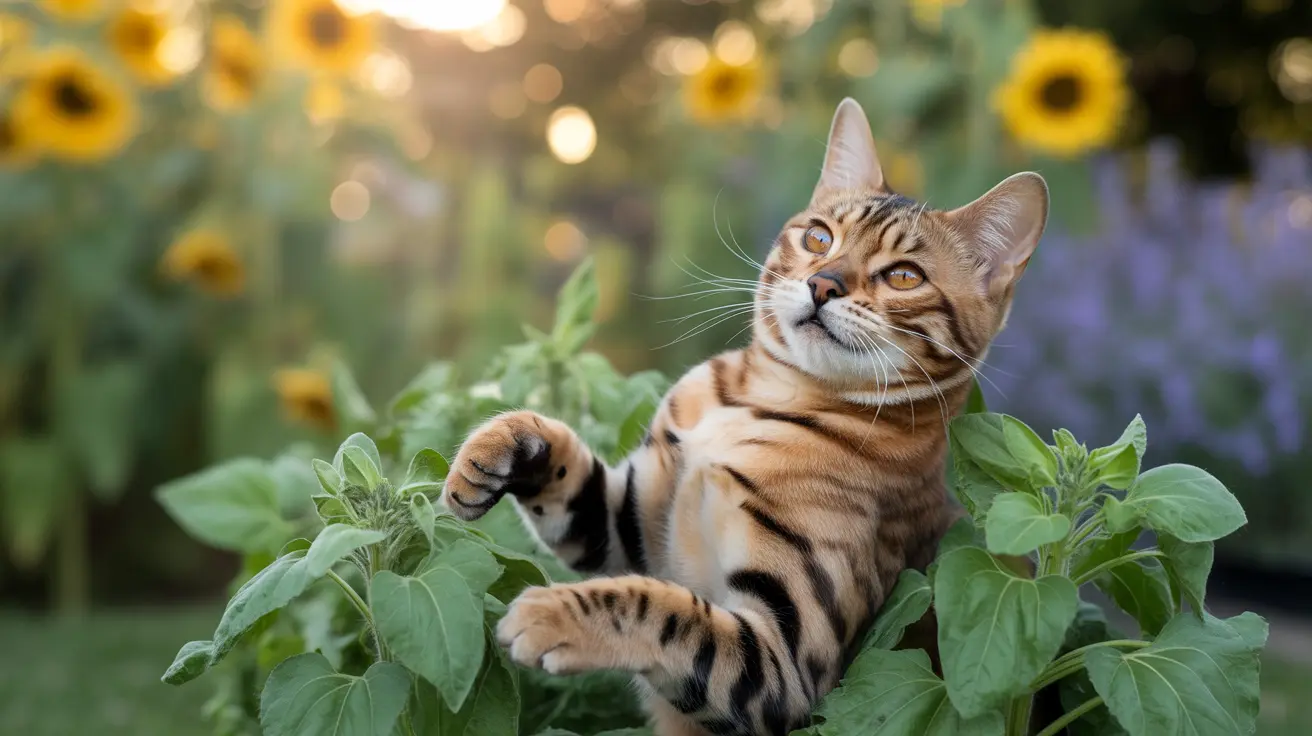Understanding Catnip and Its Active Compound
Catnip (Nepeta cataria) is a perennial herb belonging to the mint family. While it might look unassuming, this plant contains a powerful compound called nepetalactone that triggers intense reactions in most cats. This essential oil is primarily found in the leaves and stems of the plant, serving as nature's unique cat attractant.
When cats encounter nepetalactone, it initiates a complex cascade of responses in their nervous system, leading to those characteristic "crazy" behaviors we often observe. The compound's molecular structure closely resembles certain feline pheromones, which explains why cats react so strongly to its presence.
The Science Behind the "Catnip High"
When a cat sniffs catnip, the nepetalactone molecules bind to specific receptors in their nasal tissue. This interaction triggers sensory neurons that send signals to various parts of the brain, particularly areas associated with emotional and behavioral responses. The process activates the cat's opioid system, creating effects similar to natural euphoria.
Interestingly, the response differs depending on how cats interact with catnip. Sniffing typically produces the energetic, "crazy" reaction, while eating the plant often results in a calming effect. This dual action makes catnip a fascinating substance in terms of its impact on feline behavior.
Common Reactions and Duration of Effects
The typical "catnip crazy" behavior can include:
- Rolling and rubbing against surfaces
- Increased vocalization (purring, meowing)
- Hyperactive running or jumping
- Head-shaking and drooling
- Playful or sometimes aggressive behavior
These effects usually last between 5 to 15 minutes, after which cats become temporarily immune to catnip's influence for about 1-2 hours. This natural limitation prevents overconsumption and allows cats to self-regulate their exposure.
The Genetic Factor: Why Some Cats Don't Respond
Not every cat experiences the catnip craze. The ability to respond to catnip is inherited through an autosomal dominant gene, with approximately 60-80% of cats showing sensitivity. Kittens under three months old typically don't react to catnip, and some cats may never develop sensitivity throughout their lives.
Safety and Benefits of Catnip Use
Catnip is generally safe for cats and can provide several benefits:
- Environmental enrichment for indoor cats
- Stress relief and anxiety reduction
- Encouragement of exercise and play
- Natural behavior stimulation
While catnip is non-toxic, moderation is key. Most cats naturally limit their exposure, but initial introductions should be supervised to observe individual reactions.
Frequently Asked Questions
Why does catnip make some cats act crazy or hyperactive?
Catnip contains nepetalactone, which binds to receptors in cats' nasal tissue and triggers a response in their brain's emotional centers. This interaction creates a natural high that results in energetic, playful behavior.
How does the chemical nepetalactone in catnip affect a cat's brain and behavior?
Nepetalactone stimulates the olfactory system and activates the cat's opioid response system, leading to euphoric feelings and behavioral changes. The compound mimics certain feline pheromones, triggering both emotional and physical responses.
Why do only 60-80% of cats respond to catnip, and what determines sensitivity?
Sensitivity to catnip is inherited through an autosomal dominant gene. Cats need to inherit this gene to respond to catnip, which explains why not all cats are affected. The trait typically develops after three months of age.
What are the typical behaviors cats show when exposed to catnip, and how long do these effects last?
Cats typically display behaviors like rolling, purring, jumping, and increased playfulness. These effects usually last 5-15 minutes, followed by a 1-2 hour period where cats are temporarily immune to catnip's effects.
Is catnip safe for cats to use regularly, and how can I introduce it to my cat properly?
Catnip is safe for regular use, but moderation is recommended. Start with small amounts and observe your cat's reaction. Most cats self-regulate their exposure, but supervision during initial introductions is advised. Store catnip in an airtight container to maintain potency.






